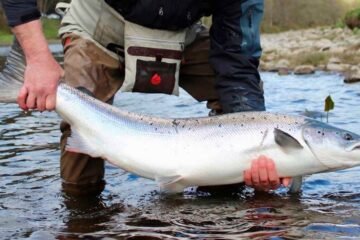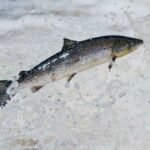Summer’s early thunderstorms brought hope, but key Scottish river systems remain under significant stress, raising alarms for ecosystems, farmers, and communities alike.
When April showers failed to materialize and May delivered record lows, many in Scotland pinned their hopes on late-May and early-June rainfall to reset the balance. But the Scottish Environment Protection Agency (SEPA) cautions that brief wet spells are not enough to erase months of drought. Eight major catchments remain at Moderate Scarcity, and another seven sit at Alert levels—all based on real-time river flow data rather than seasonal forecasts.
Rain Isn’t Enough to Reverse a Dry Trend
Despite recent downpours, underlying conditions haven’t improved substantially. SEPA’s Drought Risk Assessment Tool (DRAT) still flags critical areas:
• Moderate Scarcity: Spey, Deveron, Ythan, Don, Dee, Esk, Firth of Tay, Tyne
• Alert Level: Wick, Helmsdale, Naver, Findhorn, Forth, Almond, Tweed
A single downpour can trigger local resets—Helmsdale moved out of Significant Scarcity this week—but the impact is often fleeting.
-
Recharge is uneven. Brief summer showers rarely soak in deeply enough to feed river headwaters.
-
Ground remains baked. After the second-driest spring in over a century in eastern Scotland, soil moisture is perilously low.
-
Sequential dryness. Some regions have logged below-average rainfall for more than 12 consecutive months.
-
Ecosystem strain. Lower river levels mean higher water temperatures, reduced oxygen, and shrinking habitats.
“It won’t take a heatwave for river levels to fall again,” warns Claire Tunaley, SEPA’s Senior Hydrologist. “With summer only just beginning and eastern rainfall still well below average, conditions could deteriorate quickly.”
One-sentence paragraph here.
Communities downstream—from distilleries on the Spey to farms in the Forth basin—are already feeling the pinch. Abstraction license holders have been urged to plan ahead, but even the most frugal water use can’t compensate for widespread hydrological deficit.

Monitoring, Management, and Mitigation
SEPA’s science-led approach hinges on a calibrated network of river flow stations providing live data on water levels, temperature, and flow rates. That granular insight allows targeted warnings and proactive engagement with water users.
| Catchment | Current Scarcity Level | Recent DRAT Change | Key Concerns |
|---|---|---|---|
| Spey | Moderate | No change | Salmon spawning, distillery supplies |
| Findhorn | Alert | No change | Agricultural irrigation |
| Dee | Moderate | Slight uptick | Environmental flow, tourism rafting |
| Forth | Alert | No change | Urban supply, reservoir topping |
One-sentence paragraph here.
That table highlights just a few troubled catchments. SEPA’s Eilidh Johnston, Senior Manager for Water Industry and Rural Economy, emphasizes that “we don’t wait until the situation reaches crisis point to act, and we don’t expect water users to either.” Over 400 abstraction licensees—farmers, distilleries, and industries—have already been consulted on efficiency measures.
Still, setbacks loom on the horizon. Reservoir levels remain low in the east, and groundwater reserves aren’t showing substantial recovery. Without a steady series of soaking rains, many rivers risk slipping from Alert back into Moderate or even Significant Scarcity.
One few-word paragraph here.
To mitigate, SEPA recommends:
-
Staggered abstraction: Rotating water withdrawals to give headwaters time to recover.
-
Storage optimization: Enhancing small-scale reservoir management on private lands.
-
Catchment-based restoration: Re-wetting peatlands and reforesting margins to bolster base flows.
Communities and Ecosystems on the Front Lines
The human and environmental stakes are high. Low flows jeopardize:
-
Drinking water supplies: Urban reservoirs depend on consistent inflows.
-
Agricultural output: Irrigation curtailments risk crop yields and livestock health.
-
Aquatic life: Fish kills spike when oxygen drops and water warms.
-
Tourism and recreation: Rafting, kayaking, and fishing businesses face uncertainty.
One-sentence paragraph here.
Farmers in the Tweed basin report having to truck in water for livestock during peak heat, while salmon anglers on the Spey worry about juvenile fish survival. Distillers along the Dee have contingency plans to shift production to other sites, but that disrupts local economies.
Meanwhile, conservationists note that stressed rivers lose their ability to dilute pollutants, compounding water quality challenges. Elevated nutrient concentrations can spark harmful algal blooms—another pressure point for wildlife and humans alike.
One small paragraph here.
With summer set to intensify, the window for recovery narrows. SEPA’s alerts, grounded in real data, serve as a clarion call: the time for water stewardship is now, not later.


















